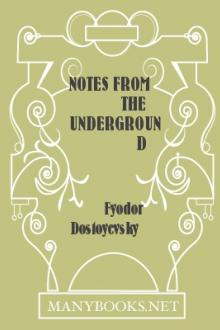Ancient America, in Notes on American Archaeology by John D. Baldwin (best ebook reader ubuntu .txt) 📖

Download in Format:
- Author: John D. Baldwin
- Performer: -
Book online «Ancient America, in Notes on American Archaeology by John D. Baldwin (best ebook reader ubuntu .txt) 📖». Author John D. Baldwin
great temple, 214;
Cortez could not have invented the temple, 215.
Cross, the, not originally a Christian emblem, 109;
vastly older than Christianity as a symbolic device, 109, 110;
common in Central American ruins, 109;
the assumption that it was first used as a Christian emblem has misled inquiry as to the age and origin of antiquities, 110.
Cuzco, Montesinos on its name, 227;
was probably built by the Incas on the site of a ruined city of the older times, 226-7;
the ruins at Cuzco, 226, 234-5.
Egyptian pyramids totally unlike those in America, 183;
no resemblance between Egyptians and the Mexican race, 183.
Ethnology, American, discussed, 65-9;
South Americans the oldest aborigines, 68, 69, 185;
Huxley’s suggestion, 69.
Gallatin, Albert, on Mound-Builders, 34.
Garcilasso partly of Inca blood, 258;
not well qualified to write a history of Peru, 258-9;
he began with the fable of Manco-Capac, and confined all history to the Incas, 259-61;
was received as an “authority,” 269;
his influence has misdirected Peruvian studies, 269.
Gila, valley of, its ruins, 82.
Gold the most common metal in Peru, 250;
astonishing abundance of Peruvian gold-work, 249-50;
their gardens made of gold, 250;
amount of gold sent from Peru to Spain, 238, 250;
gold calendar found recently at Cuzco, 236.
Herrara on the buildings in Yucatan, 149.
Huehue-Tlapalan, from which the Toltecs went to Mexico, 57, 75, 201-3;
supposed to be the Mississippi and Ohio valleys, 202, 203;
described in old Central American books, 202;
the Toltecs driven from Huehue-Tlapalan by the Chichimecs, or wild Indians, 203;
it was at a distance northeast of Mexico, 201, 202;
Cabrera and others on Huehue-Tlapalan, 202.
Humboldt on Phœnician symbols in America, 186;
on the origin of the Aztecs, 218;
on Peruvian great roads, 245;
on books of hieroglyphics found in Peru, 246, 255;
describes the pyramid of Papantla, 91, 92.
Huxley on American ethnology, 69.
Incas of Peru, origin of the title, 267;
they represent only the last period of Peruvian history, 261;
their dynasty began 500 years or less before the Conquest, 260-1;
list of the Incas, 261;
Manco-Capac a fable, 260-1.
Indians of North America, vain endeavors to connect them with the Mound-Builders, 62;
came toward the Atlantic from the northwest, 59;
the Iroquois group may have come first, 58;
their distribution relative to the Algonquins, 59, 60;
date of Algonquin migration estimated, 60;
these Indians resemble the Koraks and Chookchees, 65, 185;
they are entirely distinct from Mound-Builders and Pueblos, 60, 65;
their barbarism original, 61.
“Inscription Rock,” 78.
Inscriptions in Central America written in Maya characters, 196;
written perhaps in an old form of speech from which the Maya family of dialects was derived, 196;
attempts to decipher them, 292.
Iron, names for, in ancient Peru, 248.
Israelitish theory of ancient America, 166-7.
Keweenaw Point, a copper district, 44.
Kukulcan, his worship, 220, 293.
Lake Peten in the forest, Maya settlement there, 95;
Ursua’s road from Yucatan to the lake, 95.
Landa wrote on the Mayas of Yucatan, 191;
preserved the Maya alphabet, with explanations, 191.
Languages in Mexico and Central America, 200, 205;
three groups, 216;
probably not radically distinct, 206, 216;
the most important group supposed to be Colhuan, 205.
Las Casas on Central American annalists, 187-8;
what he says of the old books and their destruction, 188.
Maize, did Indians get it from Mound-Builders? 35.
Malays, their ancient empire, 167-8;
their navigation of the Pacific, 168;
spread of their dialects, 168;
came to America, 169, 170, 272;
El Masúdí on the Malays, 168;
were not civilizers in America, 170-1;
ruins of Malayan cities in Java, 163-9.
Manco-Capac a fiction of the Incas, 260-1;
discarded by Montesinos and other early Spanish writers, 261, 269.
Mandan Indians supposed Mound-Builders, 74.
Mayas first seen by Columbus, 209;
their phonetic alphabet preserved, 191;
descendants of the first civilizers, 170.
Mexican cities noticed by Spaniards, 211, 215;
what Montezuma said of his building materials, 209.
Mexican “picture-writing” a peculiarity of the Aztecs, 221;
much inferior to the Maya writing, 221;
something like it at Chichen-Itza, 143;
Aztecs could not have left such inscriptions as those seen in the ruined cities, 221.
Mexican ruins in the central region, 89-92;
Tulha, 89;
Xochicalco, 89, 90;
Papantla, 91, 92;
Cholula, 90;
Teotihuacan, 90;
pyramids with galleries, 91;
unexplored antiquities in this region, 91.
Mining works of Mound-Builders, 43-6;
mining method of the Mound-Builders, 43;
ound, 44, 46;
they left a detached mass of copper in a mine, 43-4;
antiquity of their mining works, 46, 53, 64.
Mitla, its ruins show refined skill in the builders, 118, 121;
the decorations, 121;
present state of the ruins, 117-122.
Montesinos, Fernando, explored and studied Peru fifteen years, 261;
unequaled in knowledge of its antiquities and traditional history, 263;
his means of information, 262;
how historical narratives and poems were preserved by the amautas, 263;
how literature can be preserved by trained memory, 262-3;
Homer and the Vedas, 262-3.
Montesinos on Peruvian history, 264-7;
there were three distinct periods, 264;
he rejects the Manco-Capac fable, 264;
does not begin the history with such stories, 264;
reports 64 kings in the first period, 264;
his account of the Peruvian sovereigns, 264-7;
the art of writing existed in the older time, 265;
how the first period closed, 266;
the second period, for 1000 years, a period of invasions, divisions, small states, and general decline of civilization, 264, 267;
in this period the art of writing was lost, 267;
in it the 26 successors of the 64 kings were merely kings of Tambotoco, 266;
how this period ended, 267-8;
the third period began with Rocca, the first Inca, 267;
why Montesinos has not been duly appreciated, 268-9;
his facts stand apart from his theories, 268;
probabilities favor his report of three periods, 270-1.
Montezuma on his building-material, 209.
Morgan, Lewis H., on the Indians, 59, 60, 66.
Mound-Builders, their national name unknown, 14, 57;
their mound-work and its uses, 17-19;
like mound-work in Mexico and Central America, 70, 71, 72;
their civilization, 33-39;
used wood for building material, 70, 71;
their inclosures, 19-24;
their works at the south, 24, 27;
their principal settlements, 30, 31, 34;
their border settlements, 52;
had commerce with Mexico, 73;
relics of their manufactures, 40, 41, 61;
their long stay in the country, 51-55;
were not ancestors of wild Indians, 58-61;
came from Mexico, 70;
were connected with Mexico through Texas, 73;
probably were Toltecs, 74, 200-3.
Muyscas, their civilization, 271.
Nahuatl or Toltec chronology, 203-4.
Natchez Indians, were they degenerate Mound-Builders, 58, 56.
Northmen in America, 279-85;
they discovered Greenland, 280;
their settlements in Greenland, 280-1, 284;
Biarni’s constrained voyage to Massachusetts in 985 A.D., 163, 281;
subsequent voyages to New England, 281-4;
encounters with the Indians, 282, 283;
the Norse settlements in Vinland were probably lumbering and trading establishments, 284;
not people enough in Greenland and Iceland to make extensive settlements, 284;
written narratives of these discoveries, 279-80.
Origin of Mexican and Central American civilization, theories of, 165-183;
the “lost tribes” theory absurd, 166-7;
the Malay theory untenable, 170-1;
the Phœnician theory fails to explain it, 173-4;
the Atlantic theory explained by Brasseur de Bourbourg not likely to be received, 182;
it was an original American civilization, 184;
may have begun in South America, 185, 246, 272-3.
Orton, Prof., on Peruvian antiquity, 273, 274.
Pacific islands, their antiquities, 288-92.
Palenque, Stephens’s first view of, 100;
this city’s name unknown, 104;
supposed to have been the ancient Xibalba, 199;
some of its ruins described, 105-9;
extent of the old city can not be determined, 96, 105;
difficulties of exploration, 105, 110;
the cross at Palenque, 109;
aqueduct, 105.
Papantla, its remarkable stone pyramid, 91, 92;
important ruins in the forests of Papantla and Misantla, 91.
Paper, Peruvian name of, 267;
manufacture of, for writing, proscribed in the second period of Peruvian history, 267.
Peruvian ancient history, 257-67.
Peruvian civilization, 246;
differed from Central American, 222-3, 246;
is seen in the civil and industrial organization, 247;
in their agriculture, 247;
in their manufactures, 247-51;
their dyes, 247-8;
their skill in gold-work, 249;
the abundance of gold-work, 249-50;
their schools of the amautas, 253, 263;
their literature, 255;
anciently had the art of writing, 255, 267;
had names for iron, and said to have worked iron mines, 248-9.
Peruvian ruins, where found, 222, 237;
they represent two periods of civilization, 226;
remains on islands in Lake Titicaca, 227-8;
at Tiahuanaco, 233-4;
remarkable monolithic gateways, 233-4;
at old Huanuco, 239-40;
at Gran-Chimu, 237-8;
ruins of a large and populous city, 237;
Cuelap, 239;
Pachacamac, 243;
subterranean passage under a river, 243;
the aqueducts, 222, 237, 243;
the great roads, 243-6;
ruins at Cuzco, 234.
Phœnicians, or people of that race, came probably to America in very ancient times, 172, 173;
decline of geographical knowledge around the Ægean after Phœnicia was subjugated, about B.C. 813, 272-3;
supposed Phœnician symbols in Central America, 186;
Phœnician race may have influenced Central American civilization, but did not originate it, 173, 185;
Tyrians storm-driven to America, 162, 163.
Pizarro seeks Peru, 224-5;
discovers the country, 225;
goes to Spain for aid, 225;
finally lands at Tumbez, 225;
marches to Caxamalca, 220;
perpetrates wholesale murder and seizes the Inca, 220;
the Inca fills a room with gold for ransom, and is murdered, 220, 249.
“Popol-Vuh,” an old Quiché book translated, 192;
what it contains, 193;
Quiché account of the creation, 194;
four attempts to create man, 194-5;
its mythology grew out of an older system, 193-4;
kingdom of Quiché not older than 1200 A.D., 193.
Pueblos, 76, 77;
Pueblo ruins, 77-89;
occupied northern frontier of the Mexican race, 68, 217-18;
unlike the wild Indians, 67-8.
Quichés, notices of, 193.
Quippus, Peruvian, 254-5.
Quirigua, its ruins like those of Copan, but older, 114;
it is greatly decayed, 117;
has inscriptions, 117.
Quito subjugated by Huayna-Capac, 225;
was civilized like Peru, 270;
modern traveler’s remark on, 276.
Savage theory of human history, 182.
“Semi-Village Indians,” 67, 68.
Serpent, figures of, 28;
great serpent inclosure, 28.
Simpson, Lieut., describes a Pueblo ruin, 88, 89.
Spinning and weaving in Peru, 247;
vestiges of these arts among the Mound-Builders, 41;
the Mayas had textile fabrics, 209.
Squier on the Aztecs, 92;
on the more southern ruins in Central America, 123, 124;
on the monoliths of Copan, 112;
on
Free ebook «Ancient America, in Notes on American Archaeology by John D. Baldwin (best ebook reader ubuntu .txt) 📖» - read online now
Similar e-books:





Comments (0)